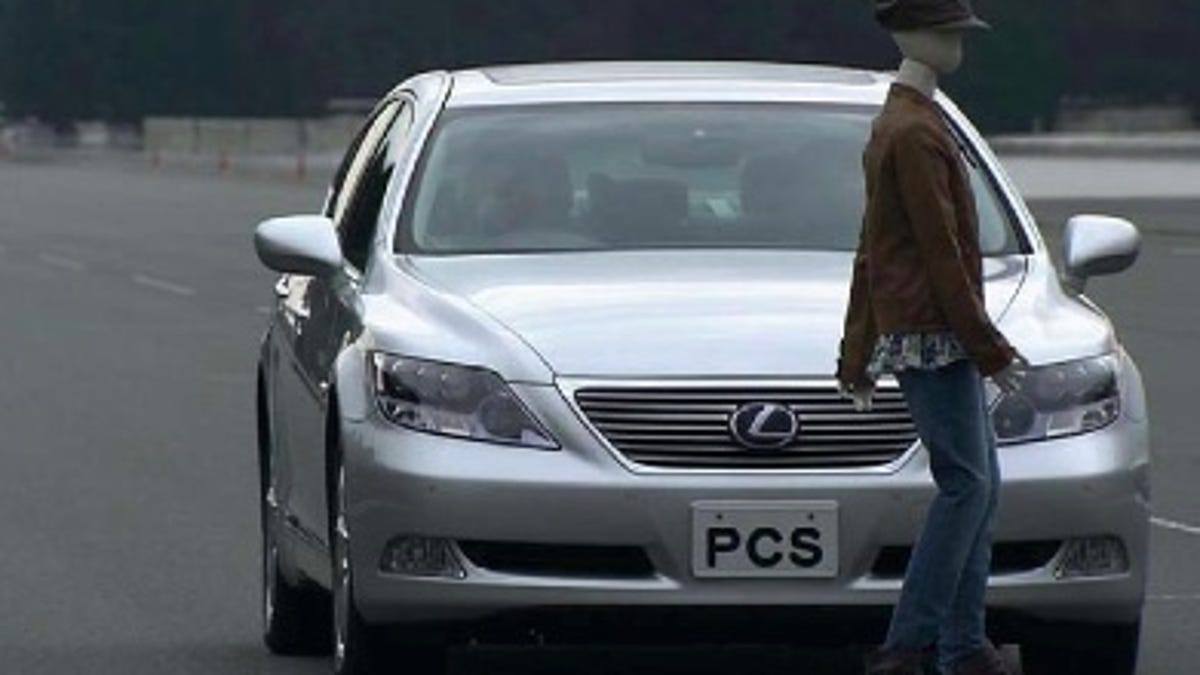When braking isn't enough, Toyotas will steer you away from crash
To reduce pedestrian fatalities, Toyota is testing a precollisin system that will steer vehicles away from a person or object if the vehicle can't brake in time to avoid hitting it.

Imagine a situation where a kid chases a ball into a street. Even for drivers with lightning-sharp reflexes, there might not be enough braking distance to avoid impact. But Toyota's next-generation crash avoidance technology may be able to solve that problem by steering the vehicle out of harm's way.
Designed in part to reduce pedestrian fatalities, Toyota's Pre-Collision System (PCS) with collision-avoidance assist uses stereo camera and millimeter-wave radars installed around the vehicle to identify objects in its path. If the system calculates that there isn't enough time to brake and that a crash with an object is imminent, the PCS takes control of the steering wheel and guides it around the object. But Toyota also says that effectiveness of the new system will depend on the driving environment and circumstances, which can be taken to mean that the PCS won't engage if there are other cars or pedestrians on the road.
The PCS technology is part of Toyota's efforts to reduce pedestrian deaths, which have not gone down in Japan even though automotive fatalities have. Also in the works are pop-up hoods that soften the blow if a pedestrian lands on the hood. Non-pedestrian safety technology in the works includes lane departure prevention, adaptive high beams, and emergency response technology.
Rather than turn high beams on and off when sensors detect oncoming vehicles, adaptive high beams are partially shielded so that they stay on, but won't blind drivers in other vehicles. Emergency response technology will monitor the driver through sensors in the steering wheel, taking control of the vehicle if it determines the driver is having a heart attack or other medial emergency.
Other vehicles employ similar technology. The Volvo XC60 was recognized by the IIHS as having the most effective forward crash avoidance technology. Jaguar employs pop-up hoods in some vehicles, and Ford is developing a heart-monitoring seat. But so far, Toyota seems to be the only manufacturer that will steer you out of harm's way.
Source: Associated Press

